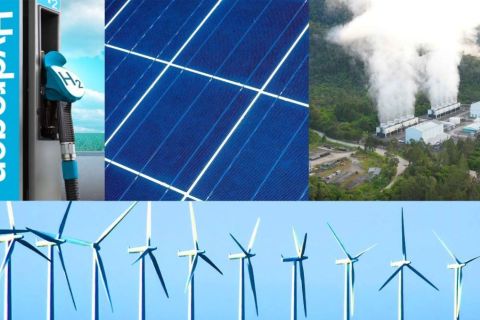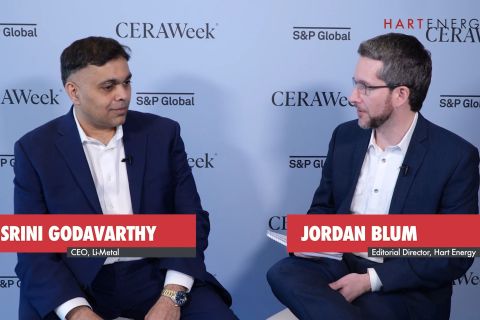Subsea production systems must now go deeper and reach farther to extract oil and gas around the world. As a result, the need for dependable and efficient thermal insulation has become paramount.
Thermal insulation is an integral part of designing any production system, especially in deep, cold waters. This is because effective insulation of subsea structures helps maintain flow rates, optimize productivity, and reduce processing costs.
Thermal insulation is even more pertinent for subsea architecture. Insulation materials are used to guard against the buildup of waxes and hydrate crystals in the reservoir fluids, which can occur when the hot fluid is depressurized and exposed to the low seawater temperature or there is a temporary production halt.
Furthermore, during shutdown, the insulation gives sufficient time for inspection of the pipe and equipment, so engineers can solve production problems and allow methanol or glycol injection if necessary.
Unchecked, these deposits can quickly build up and cause loss of flow or even total blockage. Such downtime means a loss of revenue, and blockages are expensive to rectify, representing a loss on a considerable investment.
An evolving landscape
Over the last 10 years production has seen wellheads located in near-freezing water depths in excess of 3,500 m (11,483 ft), and operating temperatures of 150C (302F) are commonplace.
These extreme temperatures have resulted in an accelerated need for new insulation materials that can keep up with the increasing demands. Many existing insulation materials simply are not up to it, and their use could lead to a rapid degradation of performance and loss of revenue.
Not only must they withstand the extreme conditions, they must last the project’s lifetime, often now up to 40 years.
It is not just manufacturers that have been spurred on by the challenge of developing new solutions that can keep up with the demands of the offshore engineer; operators also have responded, adapting their approaches to specifications to ensure peace of mind throughout the project, from production and application to subsea installation and use.
More than ever they understand that in addition to having excellent thermal insulation properties, materials need to protect against corrosion, resist seawater and impacts, be incompressible yet flexible, and not degrade during the life of subsea projects.
A complete strategy
Operators are looking for more robust solutions to give them the confidence they need. With cost no longer at the forefront when specifying technology, it is evident that generic specifications and product testing just will not cut it anymore. Instead, operators want to dig deeper into the insulation material they are specifying and conduct up-front, project-specific qualifications. Subsea thermal insulation must now be tested against specific project parameters – something that historically was rarely heard of.
Numerous considerations must be made when evaluating the suitability of a material, and a number of testing programs must be conducted to ensure that the most appropriate solution is chosen. While there is a real lack of subsea insulation qualification standards, particularly compared to other subsea technologies, operators are making sure they go far beyond mechanical integrity concerns and now also stringently qualify the application personnel, equipment, and processes.
Furthermore, rigorous project-specific qualifications are being set by operators as well as material screenings in advance of project-specific selection.
Taking control
There also has been a significant increase in quality assurance and control measures that must now be made during application, including an emphasis on operation skill levels, qualification, and documentation.
This is because the performance of a thermal insulation system is as dependent upon the quality of its installation as it is upon the quality of the material itself. Given the complexity of many subsea structures, the application of insulation material can present considerable difficulties, especially in terms of access, efficiency, and completion schedules.
Inconsistent quality control processes have been one of the main failure mechanisms for insulation systems in the past. As such, for each stage of production and application checks now need to be made to ensure complete compliance as well as an onsite verification of applied systems. Operators have put increasing emphasis on providing concise, quality documentation, which provides traceability throughout the entire process.
A change for the better
In response to this need for better qualification and quality assurance to ensure the reliability of thermal insulation strategies, leading manufacturers have taken steps to make certain that the industry better understands the characteristics of an efficient and effective insulation system.
As an industry standard, leading manufacturers have extremely experienced field service teams comprised of highly trained professionals to ensure a total insulation service that assures product performance and quality. They also have invested heavily in state-of-the-art mixing and dispensing equipment to make sure they have hardware that can provide a functional and robust delivery system capable of applying insulation materials to even the most complex structures.
This equipment, which can be designed for specific sites, ensures ease of mobility and is housed in converted container units for easy handling. Mobile laboratories and dedicated quality assurance personnel also are provided for projects.
Manufacturers are now more aware that complex fieldwork can incur costs for customers. As such, manufacturers seek to ensure that all teams are fully briefed on the requirements of each project well in advance to ensure time spent on site is optimized and to provide the best value to the customer.
Holistic approach
But it is not just about meeting stringent project-specific parameters. While this is now tremendously important for operators, more focus also is being given to the solution itself, more specifically to the interaction between the anti-corrosion coating and insulation material.
Instead of viewing these two elements as separate items, operators have started seeing them as entire systems. These two elements are closely connected, and the critical failure of either can cause failure to the entire architecture. Instead, operators are looking for entire systems that have a single point of responsibility, taking more of a holistic approach to the engineered coatings.
This focus on technology is not at all surprising as, historically, products have been pushed beyond maximum operating limits as the definition and criteria of selecting them was flawed; materials would be selected based on “hot dry” service capability rather than on a worst-case design, which would be “hot wet.”
The more traditional products such as glass syntactic polyurethanes are particularly susceptible to degradation when exposed to high temperatures and wet applications, and many failures within the industry have circled around this technology. This has generated a lot of interest in higher operating temperature products, particularly ones that had a more robust nature and were typically unfilled systems.
Next-generation insulation
This trend has encouraged manufacturers and applicators to develop new solutions. In particular, rubber-based materials have become a more popular solution.
Compared to alternatives like steel and fiberglass, rubber has an extensive temperature range and exceptionally high pressure resistance. It is a flexible material that can damp, seal, and protect and, most of all, has an extremely long lifetime.
Another popular choice is high-temperature castable systems such as silicones or polyether thermo sets and hybrid polyurethanes, which offer ease of application and high degrees of automation. They offer lower labor intensity as they are easy to apply and are not as susceptible to operator error as are “pack-in-place” systems.
However, it is not always about finding completely new solutions. Manufacturers must continuously look at their current product portfolios to find new ways of making existing products work even harder.
As such, some manufacturers are continually reassessing subsea thermal insulation materials to see how best to enhance performance.
The latest generation of subsea insulation solutions, using an example from Trelleborg, can be used in water depths of up to 3,000 m (9,842 ft), at internal temperatures up to 155 °C (311°F), and at external temperatures as low as -35°C (-31°F).
These flexible systems consist of a three-layer buildup, which makes up the entire system. First comes an inner layer for corrosion and/or hydrogen-induced stress cracking (HISC) protection; this could be a neoprene compound that is qualified up to 95°C (203°F) or an ethylene-propylene monomer compound that is qualified up to 55°C (131°F). Both compounds provide excellent corrosion or HISC protection and have been extensively tested for adhesion, aging, and cathodic disbondment.
The middle layer has been designed to provide the thermal insulation protection, and various compounds are applicable depending on the specific requirements. The flexibility and stability of the rubber makes this an excellent choice with respect to thermal expansion.
The insulation layer is protected by the outer layer. This is a strong and robust layer that provides excellent seawater and mechanical protection and has a successful track record as far back as the early 1970s.
The insulative elastomer coating system used is a development based on ordinary rubber technology and consists of a rubber elastomer that has been chemically modified to give a very high insulating property while maintaining its inherent properties in respect to seawater resistance, pressure resistance, mechanical properties, and temperature. By using a solid rubber-based coating, these new products have very good insulation properties while providing maximum corrosion protection. This system also allows for mobile production and can be installed onsite anywhere in the world.
This is just one example of leading manufacturers responding to changing needs. Unfilled systems such as high-temperature silicones, polyether thermosets, and hybrid polyurethanes are others exhibiting stable performance at temperatures in excess of 155°C.
As the limits continue to be pushed for subsea applications, the need for reliable and durable solutions that deliver proven performance for critical thermal insulation installations has never been greater. With the lifetime of an oil field now expected to often be a minimum of 25 years and with design temperatures varying throughout up to 200°C (392°F), it has never been more important for products to prove they can stand the test of time.
Recommended Reading
Element3 Extracts Lithium from Permian’s Double Eagle Wastewater
2024-01-30 - The field test was conducted with wastewater from a subsidiary of Double Eagle Energy Holdings’ produced water recycling facility.
Occidental’s Lithium Technology ‘Ready for Prime Time’
2024-03-20 - Occidental is leaning towards a ‘build, own and operate’ approach to growing its direct lithium extraction business.
Energy Transition in Motion (Week of Feb. 9, 2024)
2024-02-09 - Here is a look at some of this week’s renewable energy news, including the latest on a direct lithium extraction technology test involving one of the world’s biggest lithium producers and the company behind the technology.
Exclusive: Building Battery Value Chain is "Vital" to Energy Transition
2024-04-18 - Srini Godavarthy, the CEO of Li-Metal, breaks down the importance of scaling up battery production in North America and the traditional process of producing lithium anodes, in this Hart Energy Exclusive interview.
Elephant in the North: E3 Lithium CEO on Finding Opportunity ‘Hunters’
2024-02-28 - E3 Lithium is working toward commercial lithium production for its Clearwater project in South-Central Alberta’s Bashaw District, while developing its own DLE technology.





